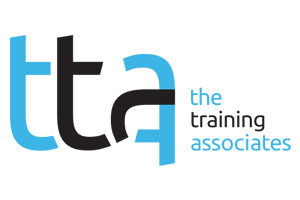Employee retention has become one of the most pressing challenges facing organizations today. With turnover at historic highs and engagement levels near record lows, the solution cannot be found in another bonus program or benefits upgrade alone. While compensation and flexibility play a role, research continues to show that the quality of leadership is what ultimately drives long-term retention and performance. And at the heart of strong leadership is one skill too often overlooked in training programs: respect.
Respect is more than a personal value: It’s a measurable leadership competency with bottom-line implications. Teaching respect as a leadership skill can help companies reduce costly turnover, boost engagement and cultivate a resilient culture where employees choose to stay and grow. In a workplace climate marked by quiet quitting, quiet vacationing and the rise of “quiet cracking” — a subtle decline in morale and emotional investment — equipping leaders to model respect is more important than ever.
The Business Case for Respect
Workplace disrespects take many forms: dismissive communication, exclusion from decision-making, inconsistent feedback or simply being ignored. Though often subtle, these daily microaggressions take a measurable toll.
According to Gallup, only 31% of U.S. employees are engaged at work, which ends up costing companies money in lost productivity. Harvard Business Review reports that 50% of employees who experience disrespect reduce their effort, and 12% leave their jobs entirely.
In contrast, workplaces where respect is consistently modeled and taught see significant benefits. A Harvard Business Review study found that employees who feel respected by their leaders report 56% better health and 89% greater job satisfaction. Organizations with respectful cultures see up to 40% more innovation and collaboration.
Simply put: Teaching respect is not just good ethics. It’s good business.
Many leadership development programs focus on hard skills, such as performance management, decision-making and strategic thinking. While these are critical, soft skills — especially interpersonal dynamics like respect, listening and empathy — often receive less structured attention.
Respect is sometimes treated as an intangible value or a personality trait rather than a teachable skill. But respect can, and must, be broken down into observable behaviors. This includes:
- Active listening and reflective feedback
- Inclusive meeting facilitation
- Transparent communication
- Timely recognition and acknowledgment
- Consistent follow-through on commitments
When leaders are trained to demonstrate these behaviors consistently, it has a direct impact on team trust, engagement and retention. To turn respect into a core competency, organizations can integrate it into their training programs in a few different ways:
1. Define What Respect Looks Like in Practice
Use case studies, simulations and examples to make respect concrete. What does respectful feedback look like in a performance review? How should leaders handle disagreement during meetings? Clarify behaviors, not just principles.
2. Train for Empathy and Listening
Empathy is the foundation of respectful leadership. Include training modules that teach leaders to listen without interrupting, validate employee perspectives and ask clarifying questions. Role-playing scenarios can reinforce active listening as a practiced skill.
3. Incorporate Respect Metrics Into Evaluations
Include respect-based competencies in leadership evaluations. Gather upward feedback from team members on how valued, included and heard they feel. It’s been reported that inclusive and respectful leaders improve decision-making by 20% and team performance by 17%.
4. Use Real-Time Coaching
Encourage managers to seek ongoing feedback from peers and team members. Real-time coaching allows leaders to course-correct and demonstrate respect in the flow of work, not just during formal evaluations.
5. Make Respect Part of Your Culture Narrative
Ensure the organization’s values, mission and internal communication reinforce the importance of mutual respect. Recognition programs should highlight respectful behavior as a key driver of success.
In today’s workplace, where top talent has options and loyalty must be earned, employees are more likely to stay where they feel respected and valued. This is not an issue of perks; it’s a human connection issue.
Training leaders to practice respect not only boosts morale and engagement but also signals a deep commitment to the well-being and growth of every employee. Organizations that treat respect as a skill to be cultivated, rather than a character trait that leaders either have or don’t, will be better positioned to navigate change and build cultures where people thrive.
Retention is no longer about keeping people from leaving; it’s about giving them compelling reasons to stay. Teaching respect as a leadership skill is one of the most powerful ways to do that. For learning and development (L&D) teams, this represents both a responsibility and an opportunity.
When leaders are trained to lead with respect, organizations do more than reduce turnover. They create workplaces where people feel seen, safe and motivated to do their best work. In today’s competitive and shifting workforce, that’s not a luxury; it’s a necessity.








